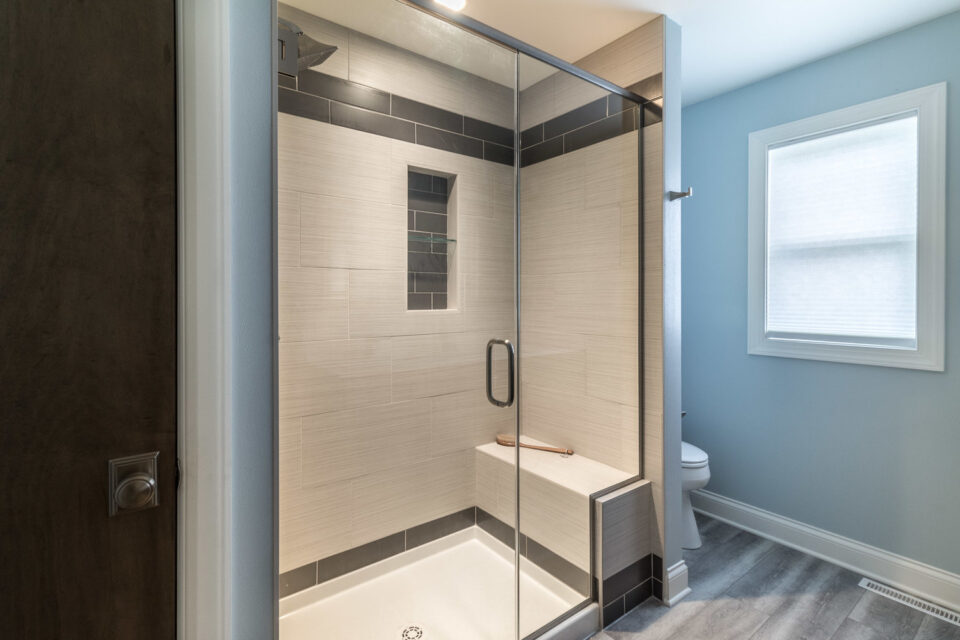Choosing the right tiles for your bathroom is not just about picking a color or pattern that appeals to your aesthetic sense. It involves understanding the functionality, durability, and the overall impact on the bathroom’s ambiance. This guide will navigate through the maze of considerations to ensure your bathroom not only looks exceptional but also stands the test of time.
Understanding Tile Materials: From Ceramic to Natural Stone
The material of the tile is the cornerstone of your bathroom’s functionality and aesthetic. Ceramic and porcelain tiles are celebrated for their durability and moisture resistance, making them ideal for wet areas. On the other hand, natural stone tiles, such as marble or granite, offer a unique beauty but require more maintenance to preserve their look and slip resistance.
Size Matters: Selecting Tile Size for Bathroom Spaces
The size of your tiles can drastically affect the perception of space within your bathroom. Larger tiles can make a small bathroom appear more spacious, while smaller tiles are suitable for creating detailed patterns and designs. The choice of tile size also impacts the installation process, with larger tiles requiring a perfectly level substrate to avoid lippage.
Color and Pattern: Creating Your Bathroom’s Ambiance
The color and pattern of your tiles play a pivotal role in setting the mood of your bathroom. Lighter colors can make the space feel more open and clean, while darker hues create a cozy and intimate atmosphere. Patterns, whether subtle or bold, add character and can be used to draw attention to specific areas or features of your bathroom.
Slip Resistance: A Safety Essential
One of the critical considerations in tile selection is slip resistance, especially in wet areas like showers. Tiles with a high slip resistance rating are essential to prevent accidents and ensure the safety of all bathroom users. Textured tiles or those specifically designed with slip resistance in mind are ideal choices for shower floors and other wet areas.
Sealing and Maintenance: Keeping Your Tiles in Top Condition
Maintenance requirements vary significantly depending on the tile material. Porcelain and ceramic tiles are low maintenance and easy to clean, while natural stone tiles require sealing to prevent water damage and staining. Regular cleaning and occasional resealing will keep your tiles looking pristine and extend their lifespan.
Cost Considerations: Budgeting for Your Bathroom Tiles
The cost of bathroom tiles can range widely based on material, size, and design complexity. Setting a budget before starting your selection process can help guide your choices and ensure that your bathroom remodel stays within financial boundaries. Remember to account for not only the cost of the tiles themselves but also installation and maintenance expenses.
DIY Bathroom Renovation: Adding Personal Touch to Your Space
Embarking on a DIY bathroom renovation can be a rewarding project, allowing you to personalize your space fully. From selecting tiles that reflect your style to the satisfaction of laying them yourself, the process can be deeply fulfilling. However, it’s essential to familiarize yourself with the renovation process and prepare adequately to ensure a successful outcome.
Future-Proofing Your Bathroom: Trends and Longevity
While keeping up with current trends can be tempting, choosing timeless tile designs ensures your bathroom remains stylish and functional in the long run. Neutral colors and classic patterns tend to age well, whereas trendy tiles may date your bathroom and necessitate an earlier renovation than planned.
Tiling Best Practices: Ensuring Professional Results
Following tiling best practices is crucial for achieving a professional-looking and durable finish. From ensuring a level substrate to selecting the right adhesive and grout, the details matter in tiling. Professional advice or guidance can be invaluable, especially for those undertaking a DIY project, to avoid common pitfalls and ensure your bathroom stands the test of time.
Environmental Considerations: Eco-Friendly Tile Options
For the environmentally conscious homeowner, selecting eco-friendly tile options is becoming increasingly important. Recycled glass tiles, for instance, offer a sustainable and visually striking alternative to traditional tile materials. Additionally, considering the lifecycle and manufacturing process of your chosen tiles can minimize your bathroom renovation’s environmental impact.
Professional Installation vs. DIY: Making the Right Choice
Deciding between professional installation and a DIY approach depends on your skill level, the complexity of your project, and your budget. While DIY can be more cost-effective and personally rewarding, professional installation guarantees a flawless finish and can be more time-efficient. Consider your limitations and the scope of your project before making a decision.
Selecting the right tiles for your bathroom involves a careful balance of aesthetic preferences, functionality, and safety considerations. By taking the time to research and plan your choices, you can ensure that your bathroom remodel meets your expectations and enhances your home’s value. Whether you opt for a professional installation or a DIY Bathroom Renovation, the key to a successful project lies in attention to detail and adherence to Tiling Best Practices. With the right approach, your bathroom can become a sanctuary of beauty, functionality, and safety.

